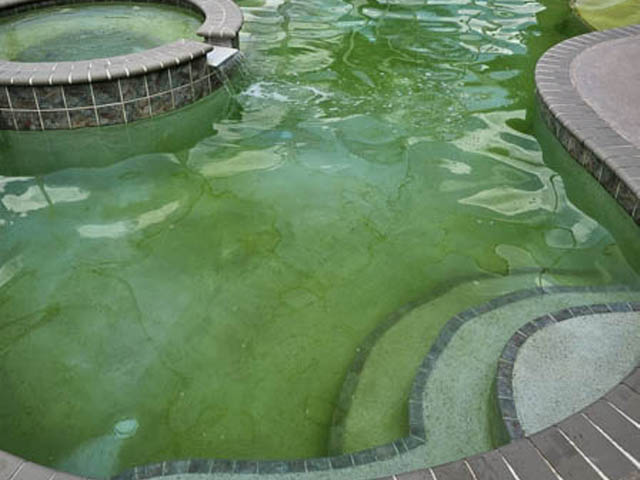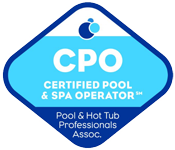Why is My Pool Water Green?

How to Prevent and Get Rid of Algae in Your Pool: Expert Tips from Flow Pool Services
Algae in your pool can be a frustrating problem to deal with, turning your once clear water into a murky green or even black mess. While algae are a common issue, they are preventable and treatable with the right pool care routine. In this blog post, we’ll share essential tips on how to prevent and get rid of algae in your pool. Whether you need help keeping your pool algae-free or you’re dealing with a current algae bloom, Flow Pool Services—serving Sarasota, Lakewood Ranch, Bradenton, and Parrish—is here to help!
What Causes Algae in Your Pool?
Before diving into how to prevent and eliminate algae, it’s important to understand what causes it in the first place.
Algae thrive in your pool for several reasons, including:
Imbalanced Pool Chemistry: When the pH, alkalinity, and chlorine levels are off, it creates a perfect environment for algae to grow.
Insufficient Filtration: A dirty or clogged pool filter reduces water circulation, which allows algae to settle and flourish.
Warm Temperatures and Direct Sunlight: Algae love warm water and sunlight, which is why pool owners in Florida are particularly susceptible to algae blooms.
Lack of Regular Cleaning: Algae can accumulate on pool walls, floors, and steps if you don’t regularly clean your pool and keep debris from accumulating.
How to Prevent Algae in Your Pool
The best way to handle algae is to prevent it before it becomes a problem. Here are the key steps to keep algae at bay:
1. Maintain Proper Pool Chemistry
One of the most important steps in preventing algae growth is maintaining balanced pool chemistry. Regularly test your water’s pH, alkalinity, and chlorine levels to ensure they’re within the proper range.
Ideally:
pH: 7.4 to 7.6
Chlorine: 2 to 4 ppm (parts per million)
Alkalinity: 90 to 120 ppm
Use pool chemicals to adjust the levels as needed. Flow Pool Services can assist with regular water testing and chemical balancing to ensure your pool is always in ideal swimming conditions.
2. Keep Your Pool Clean
Regular cleaning of your pool—skimming debris, vacuuming, and brushing the pool walls and floor—helps prevent algae from forming. Algae often start by feeding on organic material like leaves and dirt that accumulate in the pool. By removing these contaminants early, you can significantly reduce the chances of algae growth.
3. Ensure Proper Filtration
Your pool’s filtration system plays a crucial role in preventing algae. A clean and efficient filter ensures that water flows properly and removes debris from the pool. Make sure to clean or replace the filter regularly and run the pump for at least 8-12 hours a day, especially during the warmer months.
4. Use Pool Algaecide
Algaecides are chemicals designed to prevent algae growth and can be added to your pool water to provide an extra layer of protection. Choose a quality algaecide that is compatible with your pool type and use it according to the manufacturer’s instructions. Regular use of algaecides, combined with routine maintenance, will significantly reduce algae outbreaks.
5. Increase Pool Circulation
Ensure that water is circulating properly around the pool. Poor circulation can create “dead spots” in the pool where algae can thrive. Check that all pool jets are working correctly and clean any obstructions around the pump and skimmers.
How to Get Rid of Algae in Your Pool
If algae have already started to form, don’t worry! Here’s how to eliminate it and restore your pool to its sparkling clean state.
1. Shock Your Pool
Shocking your pool with a high dose of chlorine is the first step in killing algae. This will raise the chlorine levels significantly, killing algae and other harmful bacteria in the water. Make sure to follow the manufacturer’s instructions and run the pump for at least 24 hours after shocking to help circulate the chlorine throughout the pool.
2. Scrub the Pool Surfaces
Once the chlorine has started working, scrub the pool walls, steps, and floor using a pool brush. Algae can cling to pool surfaces, and scrubbing will help remove it. Be sure to focus on areas that are prone to algae growth, like corners and shaded spots.
3. Vacuum the Pool
Vacuum the pool thoroughly to remove dead algae and other debris that may be lingering at the bottom of the pool. A pool vacuum will help prevent the dead algae from reintroducing itself into the water, where it could start growing again.
4. Clean the Filter
After treating the pool, it’s essential to clean your pool filter. Since the filter may have trapped algae and debris, a clean filter ensures that your pool water remains clear and algae-free. Run your filter and check the pressure gauge regularly to make sure it’s working properly.
5. Maintain a Regular Pool Maintenance Schedule
After removing algae, make sure to keep up with regular pool maintenance to avoid future outbreaks. This includes balancing pool chemicals, cleaning the pool, and checking the filtration system.
Why Choose Flow Pool Services for Your Pool Care Needs?
Dealing with algae can be time-consuming and overwhelming, but Flow Pool Services is here to help. We provide professional pool care and maintenance for homeowners in Lakewood Ranch, Bradenton, and Parrish—ensuring your pool stays sparkling clean and free of algae all year long.
Our Services Include:
- Regular pool maintenance and chemical balancing
- Algae treatment and removal
- Pool cleaning and filtration maintenance
- No contracts, ever! We offer flexible services without long-term commitments, so you can enjoy a hassle-free pool experience.
Let Flow Pool Services take care of your pool so you can focus on enjoying it. With our expertise in pool maintenance and algae prevention, your pool will always be the highlight of your backyard.


